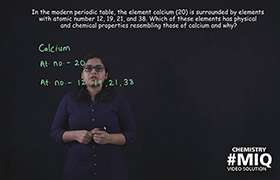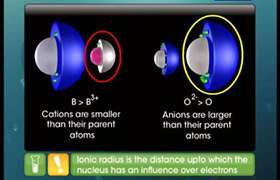ICSE Class 10 Answered
Consider the following examples.
For Sodium:
- First take the Atomic number of the given element. Say Na. Atomic no. 11
- Then calculate the electronic configuration using the atomic number 2+8+1=11 therefore the electronic configuration will be 2, 8, 1.
- Here we find that the no of valence electrons of element is 1 as the valence shell has 1 electron.
- So know we easily understand that the group is 1 because the no of valence electrons is 1.
- Now to find the period we have to understand that the period is the number of shell the element is having therefore here sodium has 3 shells (K-2, L-8, and M-1). So the period of the given element is 3.
Thus the position of the given element (here sodium) is ….
|
Group |
Group 1 |
Valence electrons = 1 |
|
Period |
3rd |
Number of shells = 3 |
When the valence shell has 1 electron, it indicates the first element of the period.
For Li: 2,1
For Na: 2,8,1
For K: 2,8,8,1
So sodium is placed in Group 1 because it contains 1 electron in the outermost shell and period 3 since it contains 3 shells.
For Chlorine:
- First take the Atomic number of the given element. Say Cl... Atomic no. 17
- Then calculate the electronic configuration using the atomic number 2+8+7=17 therefore the electronic configuration will be 2, 8, 7.
- Here we find that the no of valence electrons of element is 7 as the valence shell has 7 electrons.
- So know we easily understand that the group is 7 because the no of valence electrons is 7.
- Now to find the period we have to understand that the period is the number of shell the element is having therefore here chlorine has 3 shells (K-2, L-8, and M-7). So the period of the given element is 3.
Thus the position of the given element (here chlorine) is …..
|
Group |
VII A (17th ) |
Valence electrons = 7 |
|
Period |
3rd |
Number of shells = 3 |
When the valence shell has 7 electrons, it indicates the last element of the period.
For F: 2,7
For Cl: 2,8,7
So chlorine is placed in Group 17 because it contains 7 electrons in the outermost shell and period 3 since it contains 3 shells.











